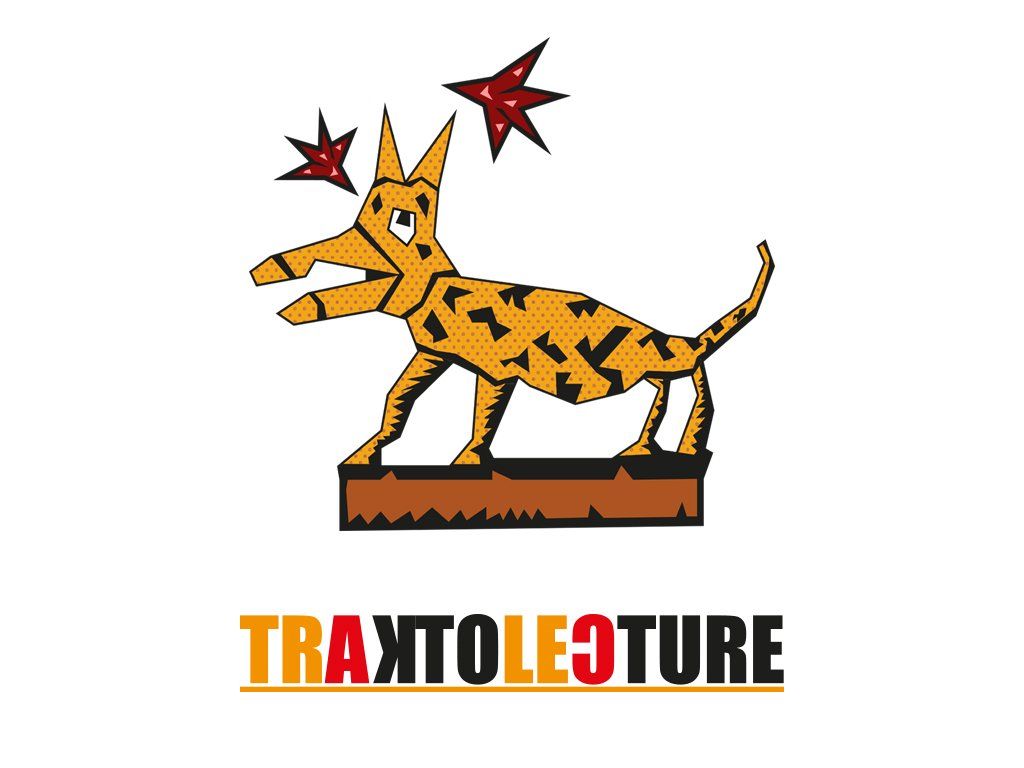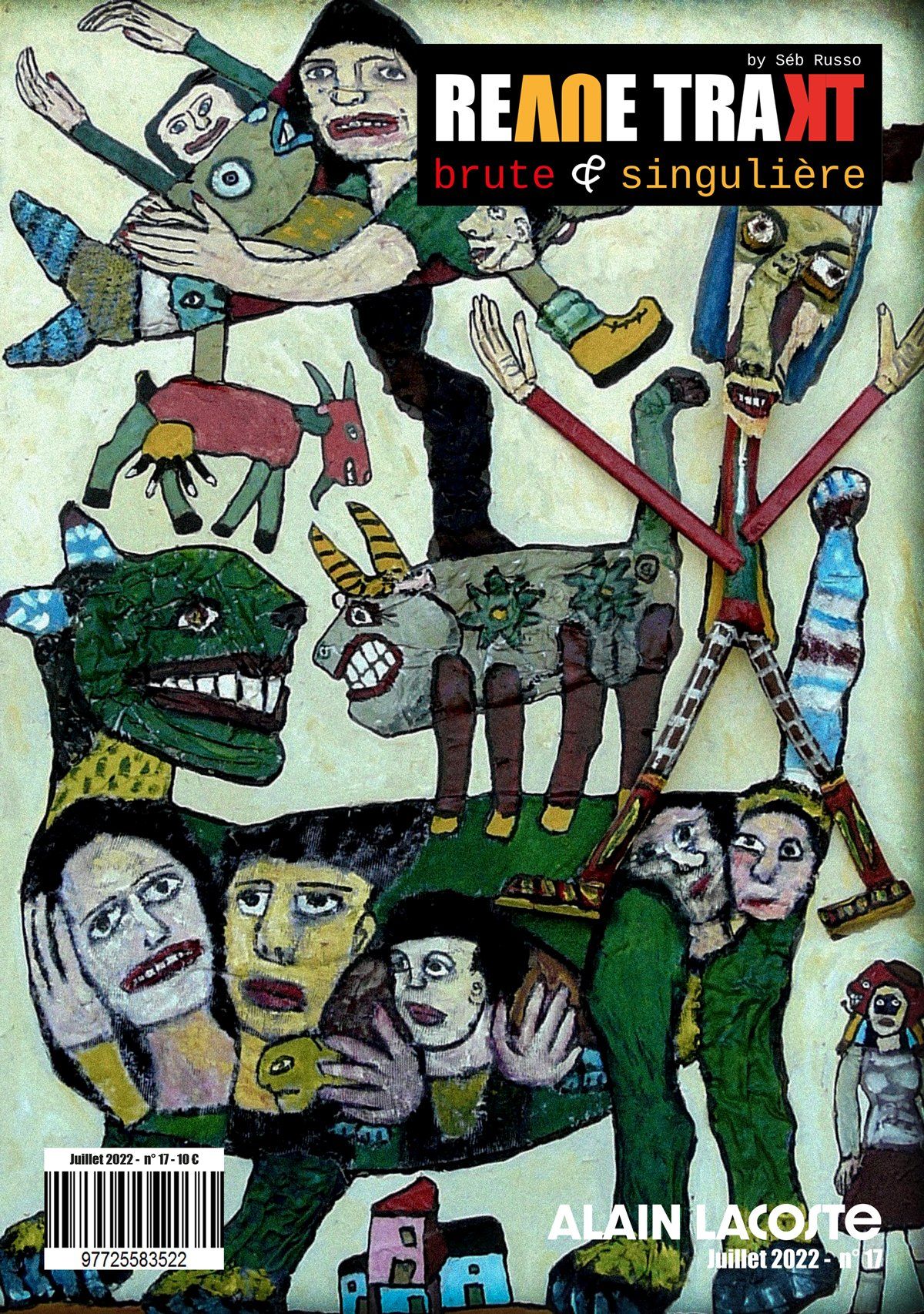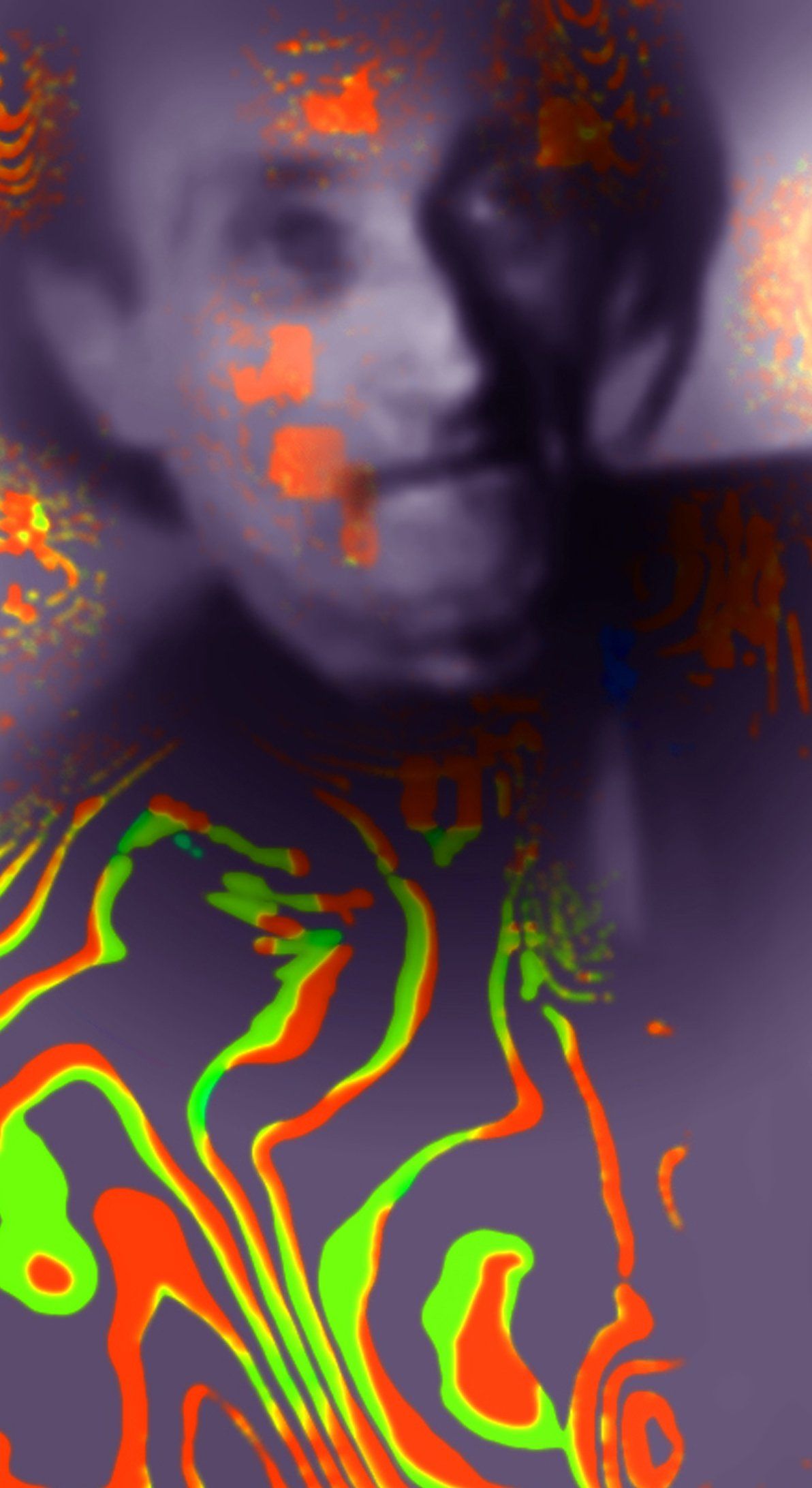Dimitri Tsiapkinis - Trakt numéro 6
Danser à la Folie
Je ne suis pas un poète. Tout de même, j’écris des poèmes. Je ne suis pas un photographe. Néanmoins, je fais des photos. Je suis un danseur et je fais danser de « non-danseurs », et très souvent des personnes souffrantes de psychopathologies.
A partir de quel niveau d’érudition notre art devient apte à être partagé avec un public ? Et pourquoi vouloir absolument le partager ?
J’ai vu une femme qui pesait au moins 120 kg, en train de danser le bélé martiniquais et j’étais touché par sa grâce. J’ai pu observer une personne souffrante de psychopathologies faire des gestes avec un tel engagement qui m’ont laissé sans mots. J’ai vu des jeunes femmes se lancer à la danse dans des pays où danser, c’est considéré comme de la prostitution. J’ai vu des comédiens sans jambes et sans bras se battre dans une œuvre cinématographique. J’ai vu des psychotiques peindre des images qui m’ont bouleversé. J’ai vu un danseur butoh qui ne se nourrissait que de bière et de cigarettes, dans des actes chorégraphiques époustouflants. C’est pour ça que j’ai absolument envie de partager mon art qui englobe des états de folie : l’émancipation de l’individu à travers l’art et au-delà de toute conformisme. Lorsque mon contexte social m’empêche d’affirmer ma singularité et me dirige dans le conformisme - qui regagne du terrain dans nos époques - je manifeste avec tout mon être. Je reformule des façons d’être à travers mon geste artistique. La beauté c’est en moi, même si elle reste interdépendante avec les esthétiques de mon époque.
Hé Dites Ho ! Numéro 6
Bernadett Mary Gridelet
TRAKT, une revue singulière...merci à vous tous qui avez participé à faire vivre la revue, par vos créations, vos propositions, vos réponses enthousiastes. Surtout à ceux qui ont persévéré encore et encore, écrivant des articles, parfois pour leur plus grand étonnement, qui font confiance en la vie. Car une revue, c’est la vie ! En tout cas, c’est notre perception des choses .
« Tu crois que je serai bien en photo, non, oui ? J’ai envie d’écrire mais tu crois que… ?
- Mais oui !
- Bon ! »
Les rencontres faites sur ce beau chemin, des rencontres variées, colorées : ces personnes que nous ne connaissions pas hier, habitant loin parfois... que nous croisons finalement, avec qui nous partageons des récits, des expériences, que nous avons hâte de faire découvrir !
Oui, cette revue a une valise pleine de vous et de ce que vous partagez !
Oui, cette revue vaut la peine d’être écoutée, lue, soutenue.
Voilà, juste, un hommage…
Roland Lebret - Numéro 6
Que faire d’un texte?
La question ne se pose qu’après avoir accepté de ne rien en savoir alors qu’on se sent poussé à s’y immerger malgré les difficultés qui semblent incommensurables. Il en fut, sans doute, pareillement pour l’auteur de ce texte : « Pour en finir avec le jugement de dieu ».
Longue histoire pour lui, puisqu’il vient s’inscrire dans ce long travail qui part du moment où on peut dire qu’il invente le théâtre de la cruauté, même si nos ancêtres grecs et romains, avaient tracé la voie qui était loin d’une voie parallèle à celle d’ Artaud.
Ces textes furent publiés le 7 février 1938, peu de temps après le début de sa longue hospitalisation qui dura presque dix ans, de septembre 1937 à mai 1946. On peut dire que le texte, « Pour en finir avec le jugement de dieu » est un texte testamentaire, qui coïncide avec l’achèvement même de sa vie.
Décider que nous allions présenter ce texte, fut une décision impulsive, on pourrait dire brute, comme le furent les dessins d’Artaud qui ne sauraient être séparés du théâtre de la cruauté. Pour ce faire, il nous fallut bien prendre quelques précautions qui consistèrent à nous laisser saisir par les voix d’Antonin Artaud, de Maria Casarès, de Roger Blin et de Paule Thévenin qui furent les premiers à l’enregistrer pour la Radiodiffusion Française qui s’empressa de le faire tomber sous le coup de la censure le 1er février 1948! Destin qu’on pourrait dire attendu alors même qu’Antonin Artaud supprima lui-même la partie intitulée « le théâtre de la cruauté ». Cet acte d’Artaud serait à prendre en compte et mériterait une réflexion documentée.
Si la première décision que nous avons prise fut de nous immerger dans les voix, la seconde fut d’inclure dans cette reprise précisément cette partie exclue de l’enregistrement de la Radiodiffusion française.
Sans le savoir, nous avions pris la décision d’oser l’acte, à l’abri des voix. Mais nous avions une autre protection :
la lecture du texte qui fut notre autre bouclier.
Voici donc ce que nous fîmes, dans un premier temps, de ce texte : être au plus près de l’enregistrement disponible. Nous y ajoutâmes une vidéo où l’un d’entre nous peignait un portrait d’Artaud sur une plaque de verre, ce qui a pour fonction de peindre sans voir ce que verront les spectateurs. L’envers et l’endroit ne sont pas les mêmes pour tous.
Notre question devient donc celle-ci seulement, aujourd’hui, en écrivant ces lignes : quelle était l’envers de ce texte qui nous avait saisi, déjà, il y a quelques années, au moment de quitter un travail de plus de 40 ans dans un hôpital psychiatrique ?
L’envers du texte n’est pas le sens du texte. Nous savons bien que trouver un sens à un texte tient lieu d’un abri contre ce texte. L’envers du texte, c’est ce qu’il produit comme symptôme.
Le mien, dans ce travail, fut de constater, après coup, que pendant les répétitions, la mémoire n’était pas de la partie. Alors que, seul, tout se déroulait facilement et juste avant le spectacle, nous avons, avec un autre, filé, nos parts respectives, sans accrocs. Ils sont venus sur la scène à nouveau ! Il a bien fallu y faire face car, à ce moment là, on ne peut plus reculer.
Cette fois-ci chacune et chacun n’avait plus ni le texte sous les yeux, ni la voix. La voix devait être celle de chacun, voie et voix, de retour donc, de ce que le texte d’Antonin Artaud pouvait susciter en chacun. A chacun d’y faire face, le collectif n’étant qu’un adoucissement .
Cette semaine de répétition fut particulière pour moi. La mort rôdait et survint au début de la semaine de répétition, juste avant la deuxième représentation.
Au cours des répétitions, il m’est arrivé de dire qu’ARTAUD, non seulement rejetait tout ce qui pouvait expliquer la vie, et donc la mort, tout ce qui pouvait la mouler, en faire quelque chose de conditionné, et qu’il nous proposait donc de créer la vie à chaque instant . Telle est la cruauté, au cœur de la vie, que l’acte théâtral est censé produire, en faisant monter sur scène les pulsions de vie et de mort qui , comme dieu , sont les masques de la cruauté inhérente à toute création et à toute vie.
Dire cela ne peut que tenter de cerner un trou béant qu’ Artaud, tout près de son dernier souffle, veut faire entendre, veut nous faire entendre.
Qu’avons-nous fait de ce texte ? Dans un cheminement particulier d’une représentation à l’autre, mêlé à la vie de chaque jour, ce qu’il m’a provoqué, c’est le retour d’une douleur jamais vraiment nommée, et donc jamais vraiment reconnue : la douleur de la perte, de la disparition à jamais qui avait déjà été au départ de ma vie.
Je me suis laissé mener jusqu’au bord « des trous de vide », comme Artaud nous y convie, jusqu’à nous dire qu’il est l’auteur de sa vie, toujours à venir, jusqu’au délire de l’auto-création.
L’acte d ’Artaud : pour en finir avec le jugement de dieu, est un acte de chaque instant. Il nous a conduit, malgré toutes les précautions d’une mise en scène, au bord du hors sens de toute vie, qui devient une nécessité de création et de transmission où on ne rencontre ni la certitude ni le confort.
L’acte d’ Artaud est de nous conduire au bord du réel, au bord de l’impossible à dire ou faire. Reste l’acte, seul, capable de lui donner un nom, juste avant de mourir. L’acte est dans ce cas toujours brut.
Ce qu’un texte peut faire de nous est sans doute plus juste.
Stéphan Vivier - Numéro 6
Je m’appelle Stéfan Vivier… Stéphan Vivier sur l’état civil..
né dans une famille bourgeoise catholique pratiquante, pleine de certitudes. Mon père, ingénieur Monsanto à la shell chimie m’a fait découvrir l’Afrique, l’Asie, et le racisme de bon aloi.
Enfant timide, mis en pension à 7 ans, mon hypersensibilité s’est vite traduite en phobie sociale.
Moqué par ceux de ma génération, transparent pour mes parents, j’étais un enfant raté, un adolescent et un jeune adulte qui se surprenait à rougir, lorsqu’il croisait son regard dans une vitrine. Impossible d’étudier..! VRP raté ( ouf..! ), photographe raté, cameraman raté..
Dès l’age de 16 ans, ayant quitté le foyer familial, gros buveur et gros fumeur, je vivais dans ma tour d’ivoire, ma chambre, qui me protégeait. Petite vie d’un petit monsieur.
Et pourtant je me suis battu.. Photographe de guerre, voilà ce que je voulais être.., témoigner sur notre monde..! Deux séjours à Belfast durant l’époque de madame Thatcher, et des grévistes de la faim.., un reportage avec les tut-sis rebelles, quelques mois avant le génocide Rwandais. Pas pour moi. La trouille au ventre, les armes dans les mains de gosses, peur de mourir. Passionné d’art, peinture, poésie, je me suis toujours su artiste. Mais les artistes, c’était les grands noms du supplément figaro Magazine.
Il a fallu que je quitte Paris pour Sète. Surveillant de nuit dans un centre pour handicapés, pucier le dimanche, une boîte de peinture à vendre, et mon aventure artistique a démarré, à 45 ans. Que de temps perdu !
L’abstraction pour ne pas me faire mal, et puis je me suis jeté enfin dans la grande famille des artistes singuliers. Plus peur! Maladroit, pas bon.. qu’importe, enfin je disais qui j’étais sans tricher. Mes premières toiles étaient dures : alcool, drogue, sexe, violence, injustices sociales.
Aujourd’hui, après plus de 15 années de peinture, de sculpture, grâce à des amis artistes ou collectionneurs, je continue ma route avec délectation.
J’aime raconter notre monde, avec un travail plus brut, et avec l’humour que mes parents m’ont transmis, à leur corps défendant...














